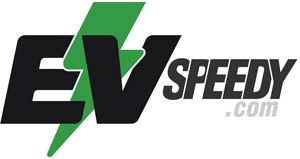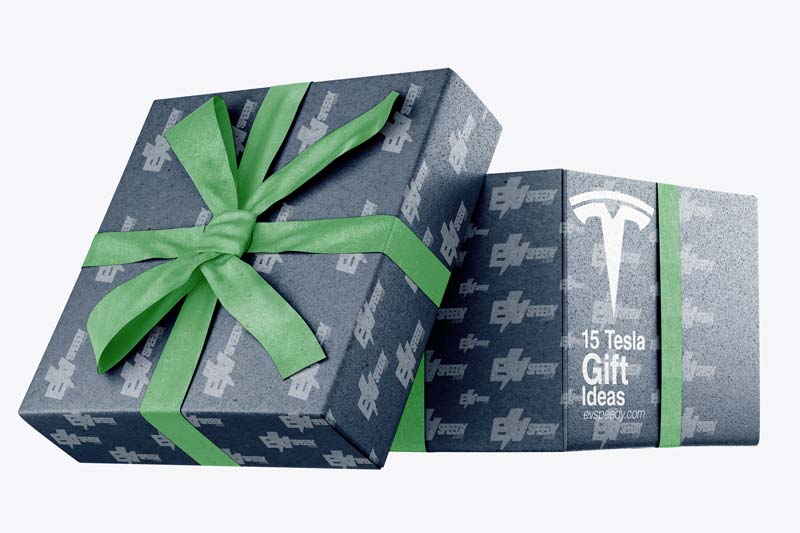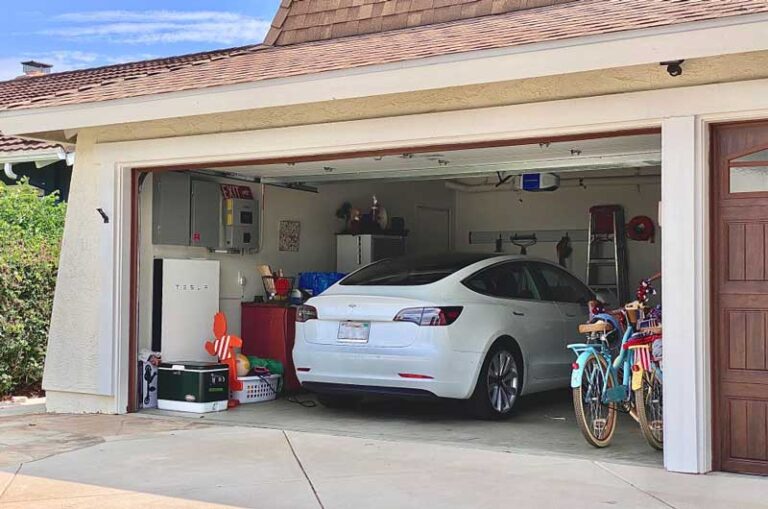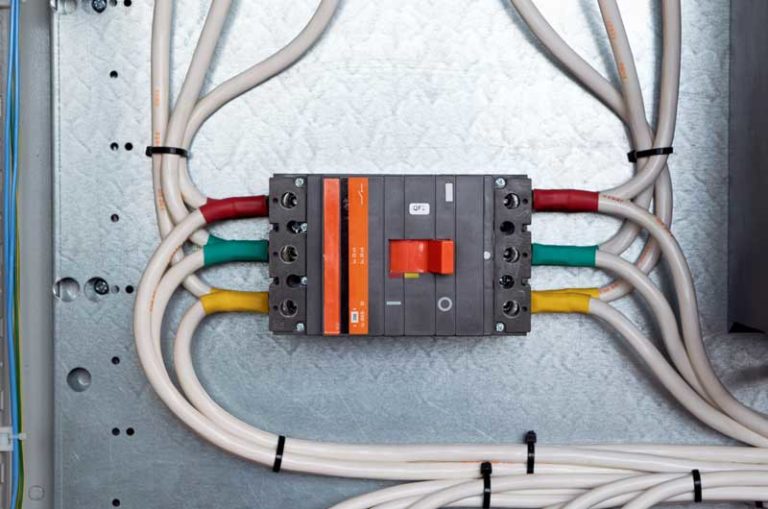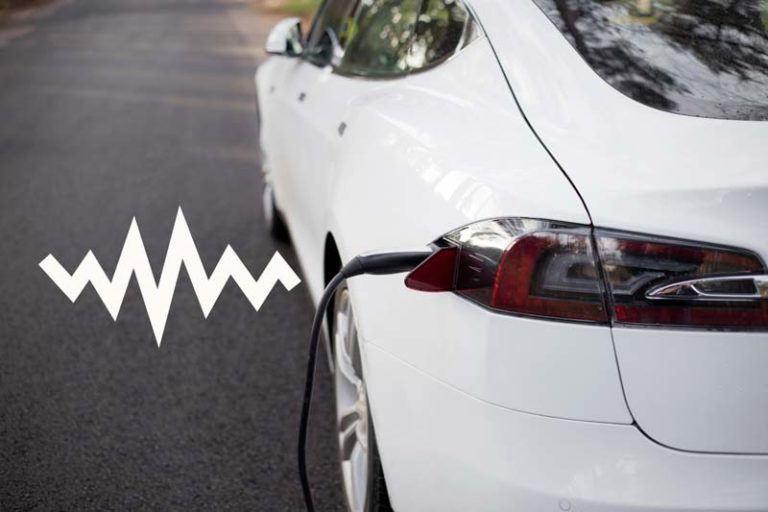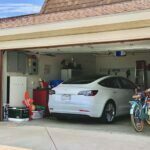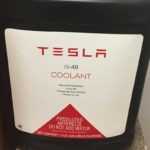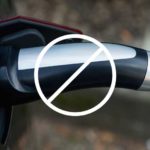Most people encounter Tesla charging slowing down over time, both within a single charging session and across their ownership of a vehicle. If you’ve ever had this experience, you’ll want to know why Tesla charging slows over time.
Tesla charging slows down over time because Tesla throttles charging speeds as a battery nears capacity to protect it from getting damaged. Charging also slows down across a battery’s lifetime. Component damage, charging methods, climate, and frequent Supercharging can also be factors.
The type of battery you have in your Tesla also influences charging speeds over time. For instance, Li-ion NCA, LFP, 2170, and 4680 cells will all charge at different rates. Read on to learn how these and other factors slow down charging in Teslas over time.
- 10 Reasons Why Tesla Charging Slows Down Over Time
- Tesla Charging Slows Down as the State of Charge Gets Closer to 80%
- Tesla Charging Slows Down Due to Frequent Supercharging (V2, V3, V4)
- Tesla Charging Will Slow Down Whenever the Charge Rate Is Throttled
- Your Tesla Level 2 Charger or Wall Connector May Have a Problem
- Amps, Circuit, and Voltage Issues Can Slow Down Tesla Charging Rates
- Tesla Charging Can Slow Down Due to Battery Degradation Over the Years
- Tesla Charging May Slow Down Over Time if the Battery Parts Malfunction
- A Tesla Battery Management System Update Can Reduce the Charge Rate
- The Battery Cells Influence How Much Tesla Charging Slows Down in Time
- The Battery Type Influences How Much Tesla Charging May Slow Down
- Frequently Asked Questions
10 Reasons Why Tesla Charging Slows Down Over Time
Your Tesla charging may slow down under various circumstances, including the following:
- You are using a Tesla Supercharger, and the charging rate is significantly lower than the maximum, such as 70 kWh instead of the peak 250 kWh at a V3 stall.
- You are using a Tesla Wall Connector at home, and the charging rate is much less than the maximum 11.5 kWh that a level 2 charger can deliver at 220V to 240V.
- You are using a level 1 charger for a Tesla, in which case the charging will not only be a lot slower but also a tad unreliable because this is not the best method.
- You may encounter a one-off or rare slowdown in your Tesla’s charging rate, or it could be a frequent experience, almost like a chronic problem that worsens over time.
- You might find your Tesla’s charging slows down while using a specific station, such as a particular Destination Charger, Supercharger, or Wall Connector at home.
- Tesla charging slowing down may be a sporadic issue triggered by distinct scenarios, including internal and external factors or hardware and software problems.
The reason why your Tesla’s charging slows is not always the same. It can vary depending on whether the slowdown occurs during a session or is spread out over months and years. So, I’ll highlight ten reasons that cover every possible and reported scenario.
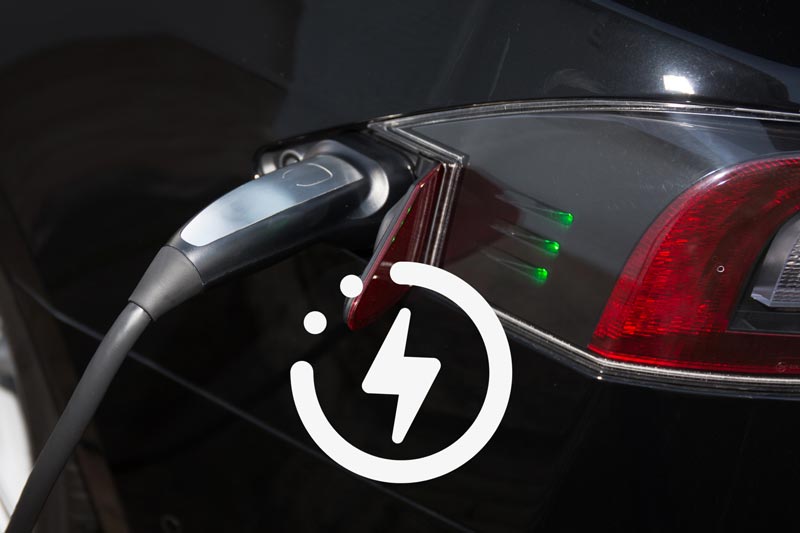
Tesla Charging Slows Down as the State of Charge Gets Closer to 80%
Lithium-ion batteries have a thermal runaway problem, which causes overheating. So, every lithium-ion battery manufacturer restricts the charging rate to optimum levels when the state of charge is sufficiently high. Tesla is no different in this regard.
The charging rate peaks when a Tesla’s state of charge is less than 50%, plateaus between 50% and 80% and slows down significantly afterward.
This peaking, plateauing, and plummeting real-time charging rate is most noticeable at a Tesla Supercharger. Don’t worry about this dip because the lower charging rate is only to protect your Tesla battery from self-accelerated degradation due to overheating at a Supercharger.
Tesla explains this ambiguously by stating that your “vehicle charges faster” when a battery has a “lower state of charge,” and the charging speed slows down “as the battery fills up.”
This ‘fills up’ is somewhat indeterminate wording. But more than 50% and up to 80% is the broad range where you can expect the charging rate to slow down for all Teslas. A few factors that influence this behavior are:
- Type of Supercharger
- Battery age and condition
- Battery preconditioning
Tesla states that real-time V2 or V3 charging rates also depend on the “current use of the Supercharger” stall or station and “extreme climate conditions.”
Tesla Charging Slows Down Due to Frequent Supercharging (V2, V3, V4)
Tesla charging can also slow down for owners who use Superchargers frequently. This applies to all Superchargers:
- V2
- V3
- V4
Tesla Superchargers use high-voltage DC charging at 480V with the following maximum power:
- 72 kW
- 150 kW
- 250 kW
The newest Tesla Superchargers, V4s, have a peak charging power of 300 kW to 350 kW per stall. All these maximum charging rates, except the 72 kW power capacity, are too high for Tesla batteries that have been rolled out to date.
By the way, if you’d like to find out more about the effects of frequent Supercharging on your Tesla battery and how it compares to a home charger, then check out this related article that I wrote.
This is because lithium-ion batteries cannot be recharged faster than their C-rate. The C-rate is the charging and discharging capacity of a lithium-ion battery in an hour. So, if you have a 100 kWh Tesla battery, the maximum power you can use to charge it is 100 kW.
If you frequently use 250 kW at a V3 or up to 350 kW with the new V4, a Tesla battery is likely to be vulnerable to the following problems:
- Battery degradation
- Capacity loss
- Mechanical damage
These problems arise due to the chemical processes inside the battery, such as rapid lithiation in the cells, overheating, and the thermal runaway problem that’s already been mentioned.
The anodes and cathodes of the cells of a Tesla battery shouldn’t be subjected to this overheating and unusual lithiation frequently. That’s why Tesla reduces the charging rate for vehicles that are Supercharged too often.
Tesla engineers are likely to offer you the following reasons if you contact them to report a slow charging rate at a Supercharger, and I’m paraphrasing here:
- The peak charging rate in a li-ion cell declines after excessive use of Supercharging sessions due to chemical and physical changes.
- Tesla’s Battery Management System is designed to protect the cells, modules, and packs so they stay safe and optimized for capacity or range.
- Tesla reduces the maximum charging rate whenever the battery cells are cold, if the state of charge is almost full, and when there’s significant degradation over time.
Hence, the maximum charging rate for a Tesla Model 3 with a 60 kWh battery may slow down to around 50 kWh if you use a Supercharger too often, irrespective of V2, V3, or V4 peak power.
Likewise, the peak power at a Supercharger may be around 70 kW for a Tesla Model Y with an 82 kWh battery. And the maximum power rate may be less than 100 kW for a Model S or X that overuses Superchargers.
Tesla Charging Will Slow Down Whenever the Charge Rate Is Throttled
Excessive use of Superchargers is not the only reason Tesla throttles the peak charging rates. The company can use its discretion to throttle the maximum power for any reason it deems fit. Consumers do not always appreciate this behavior.
Perhaps that’s why a Norwegian court found Tesla guilty of not only throttling the charging speed but also reducing the capacity or range of Tesla Model S vehicles manufactured between 2013 and 2015. It awarded 10,000 or so Norwegian Tesla owners around $16,000 each, costing Tesla over $160 million.
These Tesla owners experienced slower charging speeds after a 2019 firmware update. People in the US have also experienced reduced range on their Tesla Model S from that period with the now discontinued 85 kWh battery. In other words, who knows what Tesla does in the shadows.
Your Tesla Level 2 Charger or Wall Connector May Have a Problem
While you and I might suspect chemistry, physics, and Tesla for slow charging, the problem may lie with a level 2 charger or wall connector.
A Tesla not charging at home is a telltale symptom. But sometimes, the signs may be more subtle, like erratic or slow charging speeds. Contact Tesla if you think your Mobile or Wall Connector is the problem.
A Mobile or Wall Connector and any adapter included in your initial Tesla purchase are covered by a four-year Basic Vehicle Limited Warranty. Other purchases are only covered by the Charging Equipment Limited Warranty, which is for just 12 months and is limited to manufacturing defects.
Amps, Circuit, and Voltage Issues Can Slow Down Tesla Charging Rates
If you use a level 1 charger at 110V or 120V, your Tesla charging rate will be too slow, and it may also have circuit issues. Standard electrical circuits are wired for a max of 20 amps current flow, which the Tesla Battery Management System does not interact with or optimize.
However, even if you have a level 2 charging facility with a 220V or 240V circuit, you may have the following problems:
- Amps flow
- Circuit issues
- Voltage fluctuation
A Tesla Wall Connector can use a maximum of 11.5 kW of power or draw up to 48 amps. The specific amps drawn depend on a Tesla model and the battery’s state of charge. But your charging rate will be significantly slower if a circuit or wiring problem prevents the supply of those amps.
Like the current flow issue, voltage fluctuation will also adversely affect the charging rate. You must inspect the electrical current and voltage for the circuit you use to charge a Tesla. Or, you should have an electrician conduct a thorough diagnosis.
These electrical issues are not related to the following factors:
- Battery’s state of charge
- Supercharger overuse
- Throttled charging rate
Tesla Charging Can Slow Down Due to Battery Degradation Over the Years
Tesla batteries are phenomenal but not invincible. Like all lithium-ion batteries, Tesla’s packs will degrade as you cross the following thresholds:
- First 50,000 miles (80,467.2 km)
- 100,000 miles (160,934.4 km)
- 200,000 miles (321,868.8 km)
The battery degradation may be worse if you don’t manage its charging and discharging using the best practices. Also, the climate and real-time battery condition will affect the charging rate as follows:
- Tesla charging slows down in scorching summers because the battery gets overheated.
- Charging rates take a while to peak in freezing winters if the battery isn’t preconditioned.
- A degraded battery may take longer to precondition, so Tesla charging might slow down.
- Declining capacity will affect the optimum state of charge and, thus, the charging speed.
- Any degraded or old batteries will take longer to charge at Tesla Superchargers.
“Age and usage may increase total Supercharge time by about 5 minutes.”
tesla.com
While Tesla claims that barely 1% of its customers experience this slow charging rate, many people are among those unlucky ones.
Tesla Charging May Slow Down Over Time if the Battery Parts Malfunction
Tesla batteries have the following components in ascending order of size:
- Cells
- Modules
- Packs
A malfunctioning battery pack will have more symptoms than just a slow charging speed. But defects in a battery module or cell may not always show up in obvious ways.
Once upon a time, the Tesla Roadster battery had 6,831 lithium-ion cells. This number has gone up to 7,104 for the 18650-type cells and down to 4,416 with 2170 cell technology over the years. Despite this, even a few damaged or malfunctioning cells can affect a Tesla’s charging speed.
Likewise, Tesla batteries have 5, 16, and other module variations in their packs, depending on the cell technology and type used in different models. If one module malfunctions, you might encounter issues with charging speeds, state of charge, or total capacity and driving range.
A Tesla Battery Management System Update Can Reduce the Charge Rate
Tesla’s Battery Management System (BMS) is among the best of all electric vehicles. Nonetheless, the Tesla BMS is known to have glitches, like the 2019 update reducing the charging speed and range.
A firmware update or new protocols for the BMS may reduce the Tesla charging rate, especially if the changes indicate that the battery isn’t in impeccable condition. Besides, bugs and misdiagnoses aren’t unheard of for any firmware or software.
The Battery Cells Influence How Much Tesla Charging Slows Down in Time
Tesla uses different types of battery cell technology for its models, including the following:
- 18650
- 2170
- 4680
In July 2022, The Kilowatts (Kilowatt Media) charged a Tesla Model Y from 0% to 80% in 32 minutes using a V3 Supercharger in California. The dual motor Model Y built in Austin features 4680-type cells. These cells are supposed to charge faster than the 2170 and 18650 types.
Thus, Tesla’s charge rate also depends on the battery cell type.
The Battery Type Influences How Much Tesla Charging May Slow Down
Tesla uses different types of lithium-ion chemistries in its batteries, such as:
- Lithium iron phosphate (LFP)
- Nickel cobalt aluminum (NCA)
- Nickel cobalt manganese (NCM)
Lithium iron or Ferro phosphate batteries are the latest in Tesla cars. Tesla recommends up to 80% state of charge for its lithium-ion NCA batteries. But the recommendation is up to 100% state of charge for the new LFP batteries.
By default, LFP batteries have faster charging speeds. Tesla’s recommendation also means that their BMS won’t throttle peak charging rates as the battery approaches 80% capacity. Thus, LFP batteries may not slow down as much as some other types.
LFP batteries can endure the highest temperatures before thermal runaway among all lithium-ion batteries. So, Tesla doesn’t have to worry about the accelerated capacity decline or damage to the LFP batteries like it does for other lithium-ion packs.
Therefore, the battery type, including the cell technology and lithium-ion chemistry, will influence whether or not your Tesla charging slows down over time and to what extent.
Frequently Asked Questions
When Does Tesla Charging Slow Down?
Does Tesla Charging Slow Down at a Supercharger?
Check out these 20 great gift ideas for yourself or a Tesla fanboy.
Contact Us if you have any questions or queries.
